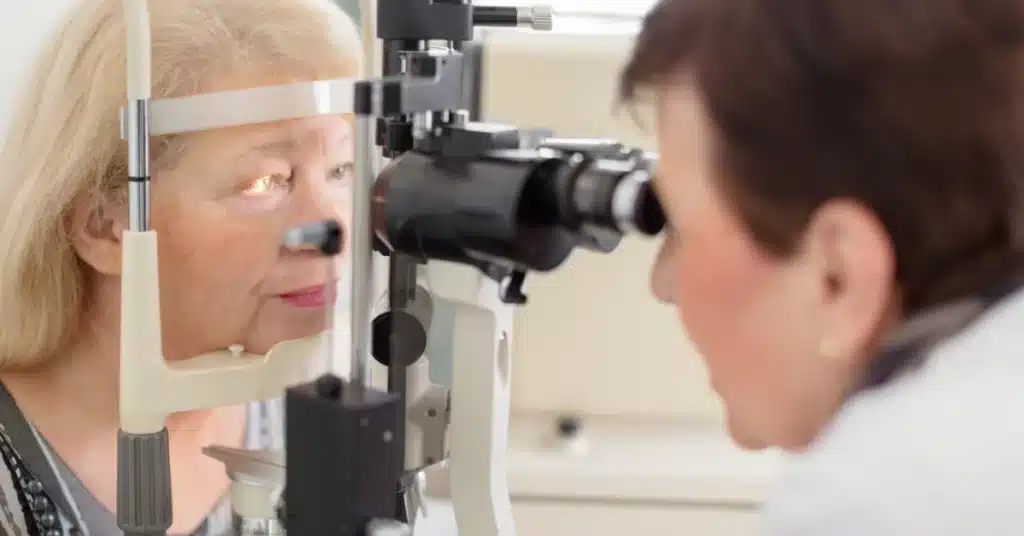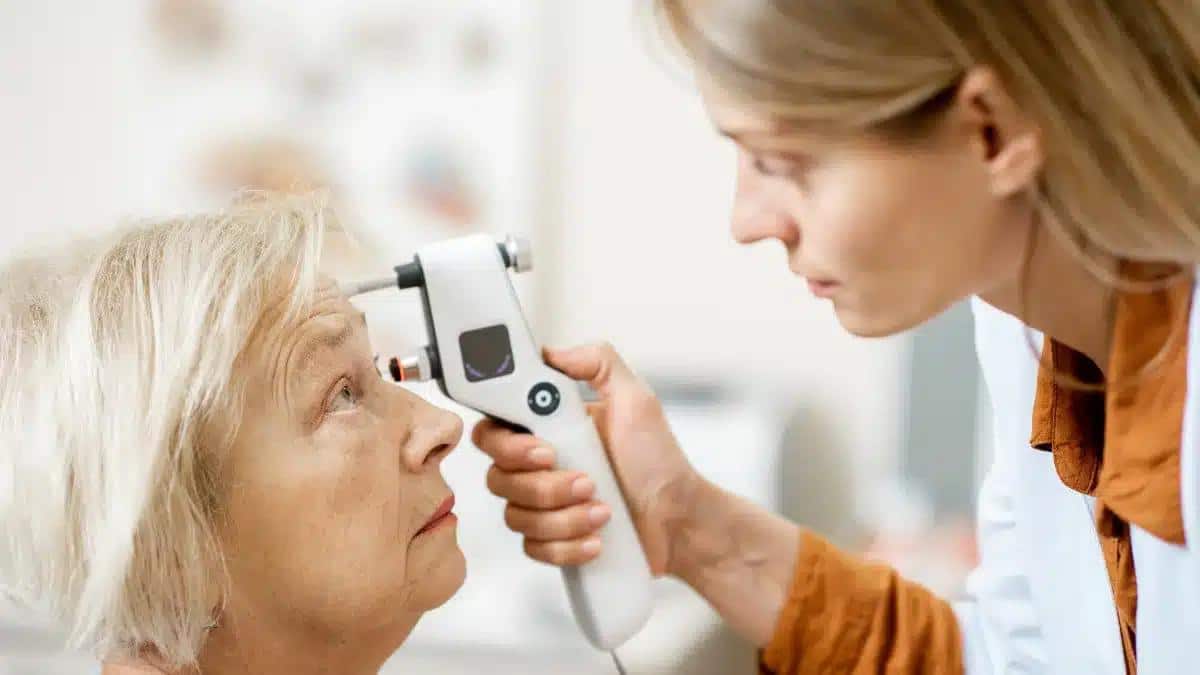Eye pressure is an important part when it comes to one’s eye health.
It is also known as Intraocular Pressure (IOP) and refers to the fluid pressure within the eye.
The right balance of eye pressure is important to maintain one’s eye shape and function.
Let us explore more about eye pressure range, factors that affect it, and what happens if the pressure increases or decreases.
Eye pressure range: What is normal
Eye pressure is defined by the balance between the production and drainage of the aqueous humor.
The aqueous humor is the clear fluid that fills the front of the eye which is the area between lens and the cornea.
Maintaining normal eye pressure is important, as high eye pressure may cause problems like Glaucoma.
On the other hand, low eye pressure can also lead to various vision problems.
Research shows that the normal eye pressure range is 10 to 20 millimeters of mercury (mm Hg).
Also, a person’s eye pressure depends on various factors like age, blood pressure, cornea thickness, and more.
One should get regular eye pressure tests to check the IOP range and early detection of eye conditions.
Know everything about pressure behind the eyes with our article: Pressure Behind the Eye and its Potential Risk Factors
High eye pressure range
High eye pressure or Intraocular Pressure (IOP) is when the fluid pressure inside the eye exceeds the normal range.
The eye pressure above 21 mm Hg is considered high eye pressure and can be a cause for eye health concerns.
A study states that high Intraocular Pressure may increase one’s risk of Glaucoma.
Glaucoma is an eye disease that may damage the optic nerve and cause vision loss problems.
However, Open Angle Glaucoma is the most common type of Glaucoma, and it does not have any early noticeable symptoms.
Therefore, regular eye examinations are important to detect the problem early and get proper treatment.
The common Glaucoma symptoms include eye pain, halo around lights, tunnel vision, and more.
Consult a doctor if you experience the above symptoms and discuss the Glaucoma treatment option.
Low eye pressure range
Low eye pressure or Ocular Hypotony is when the eye fluid pressure is lower than the normal range.
It may result from high aqueous humor drainage or low eye fluid production.
Various factors like eye trauma, surgery, or certain medical conditions can lead to low eye pressure.
Low eye pressure can increase the risk of vision problems, Retinal Detachment, and eye infections.
Some people may also observe eye pain or discomfort.
Consult an eye doctor to discuss your symptoms and get medical treatment to restore normal IOP.
Explore the various ways to lower eye pressure with our article: How to Lower Eye Pressure and Improve Your Vision
How to maintain normal eye pressure

As discussed, maintaining normal IOP is important for eye health and preventing conditions like Glaucoma.
Here are some tips to help you maintain a healthy IOP:
- Regular eye exams: One should consult a doctor for comprehensive eye exams. A tonometry test is used to measure one’s eye pressure.
- Exercise: Regular physical activity can help control IOP. People with high eye pressure should aim for at least 30 minutes of exercise daily to help lower IOP.
- Manage stress: High-stress levels can affect eye pressure. People should practice stress-reduction techniques like deep breathing, meditation, or yoga.
- Limit caffeine, smoking, and alcohol: Excessive caffeine, alcohol, and smoking can increase the risk of high IOP. Limit or stop these activities to help maintain normal eye pressure.
- Stay hydrated: Dehydration can also affect one’s eye pressure. Therefore, make sure to drink enough water throughout the day.
Consult a doctor and discuss your medical history or eye concerns to help maintain a healthy eye pressure level.
Key takeaways
Eye pressure or Intraocular Pressure (IOP) is the fluid pressure inside one’s eyes.
A normal eye pressure ranges between 10 to 20 mm Hg and is important for good eye health.
Regular eye exams and maintaining normal eye pressure range are important, as high and low IOP may cause vision loss problems and affect eye health.
However, factors like age, medical conditions, injuries, medications, and lifestyle choices can affect a person’s eye pressure.
Consult a doctor for proper diagnosis, treatment plan, and medical advice.
Frequently Asked Questions
What is the normal range for eye pressure?
The normal range for eye pressure falls between 10 to 20 millimeters of mercury (mm Hg). It is important to maintain eye pressure in the normal range for good vision health.
What is the danger zone for eye pressure?
The danger zone for eye pressure normally begins when IOP exceeds 22 millimeters of mercury (mm Hg). High IOP can increase the risk of optic nerve damage and vision problems.
Is 22 eye pressure ok?
22 mm Hg falls in the category of high eye pressure level. However, some people may have naturally higher IOP without negative effects on their eye health.
Can I measure eye pressure at home?
No, one cannot and should not measure eye pressure at home. Measuring eye pressure requires specialized equipment and training. Individuals shouldn’t attempt this on their own and consult a doctor for an eye exam.
Is Glaucoma a serious condition?
Yes, Glaucoma is a serious eye condition. The Glaucoma symptoms are not noticeable in their early stages and may slowly lead to vision problems and blindness if not treated properly.
When referencing outside resources, GoodrxMedicine always provides full citations. To learn more about the measures we use to maintain the quality of our content, please review our Content Information Policy.










